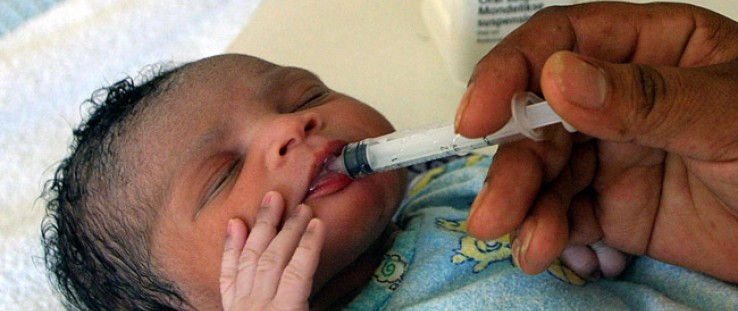 A newborn baby girl, daughter of a HIV-positive mother, receives the anti-retroviral drug Nevirapine in Paarl, Western Cape province, South Africa.
Anna Zieminski, AFP
A newborn baby girl, daughter of a HIV-positive mother, receives the anti-retroviral drug Nevirapine in Paarl, Western Cape province, South Africa.
Anna Zieminski, AFP
 A newborn baby girl, daughter of a HIV-positive mother, receives the anti-retroviral drug Nevirapine in Paarl, Western Cape province, South Africa.
Anna Zieminski, AFP
A newborn baby girl, daughter of a HIV-positive mother, receives the anti-retroviral drug Nevirapine in Paarl, Western Cape province, South Africa.
Anna Zieminski, AFP
The staff at Mozambique’s central medical store, known locally by the acronym CMAM, has been busy lately. Large shipments of anti-retroviral medicines, or ARVs, are being processed for storage and later distribution to treatment sites across the country. In a flurry of activity, men drive fork lifts loaded with boxes on pallets, placing them carefully on racks. Other staff at computers log delivery information, manage inventory data, and review orders from district medical stores and other sites.
Although doctors, nurses, and other public-health workers are the more public face of efforts to treat people with HIV/AIDS, the staff at CMAM and their colleagues around the world who support public-health supply chains play as critical a role in saving lives. Their tools, instead of syringes and stethoscopes, are storehouses and spreadsheets.
Today, more than 190,000 people are receiving HIV/AIDS treatment in Mozambique, up from 13,000 in 2005, according to the Kaiser Family Foundation. The drugs at the Mozambique store are funded by the President’s Emergency Plan for AIDS Relief (PEPFAR), and the Global Fund to Fight AIDS, Tuberculosis and Malaria. PEPFAR’s Supply Chain Management System (SCMS), a project made up of 13 health and development institutions working to procure and provide quality essential medicines at affordable prices, is one reason that countries such as Mozambique have been able to scale up HIV/AIDS treatment so quickly.
Established in 2005 and administered by USAID, SCMS provides an uninterrupted supply of quality and affordable essential medicines; knowledge, skills, and technology transfer; and global collaboration with other stakeholders. The activity provided more than 600 technical assistance assignments which have been completed in 25 countries. Assistance has been provided in forecasting and quantification; warehousing and distribution; laboratory logistics; quality assurance; and information systems. Consistent with the principles of the Global Health Initiative, the knowledge, skills, and technology transferred through these long- and short-term assistance assignments to local institutions contribute to strengthening countries’ health systems, and help build robust and potentially sustainable systems that support all health-related programs.
In 2010, SCMS delivered 100 percent of the PEPFAR-funded ARVs for Mozambique—valued at $5.7 million. SCMS has also helped strengthen warehousing, distribution, and other elements of the supply chain to help countries like Mozambique receive increasingly large volumes of products.
A Challenge Without Precedent
In 2005, the year after PEPFAR began to be implemented, many doubted that HIV/AIDS commodities could be reliably delivered to the hardest-to-reach areas of the developing world. Indeed, there was no precedent for what SCMS was tasked to achieve.
“Before PEPFAR, procurement of public health HIV commodities in targeted countries was a transactional, one-off event, with each purchase treated as a separate activity, with little or no connection to national health strategy and patient needs,” said John Crowley, chief of the Supply Chain Management Division in USAID’s Bureau for Global Health.
The challenges with this transactional approach were common in many countries. Programs paid a premium for commodities. Shortages and stockouts of commodities caused dangerous “treatment holidays” for patients. Emergency ordering wasted money on rush fees and high freight costs. Lack of inventory control wasted valuable commodities due to expiry, improper storage, and theft.
“Poor coordination often led to redundancies and gaps in service,” Crowley added.
Yet six years later, there are virtually no stockouts of anti-retroviral drugs in PEPFAR-supported programs, and SCMS provides enough ARVs to support well over half of the 3.2 million people on treatment through PEPFAR. SCMS has helped turn doubters into believers. Here’s how.
Connecting Each Country to a Global Strategy
As a first step in creating a global strategy, SCMS worked to bring life-saving medicines closer to those who need them. Most ARV manufacturers are located outside Africa, and the time required to process and deliver an order is typically three to six months under the best of conditions, with some purchasers seeing procurements taking over a year.
In response, SCMS established regional distribution centers in Ghana, Kenya, and South Africa. These modern warehouses hold strategic stock of commonly used products, provide regularly scheduled shipments to neighboring countries, and expedite emergency orders to prevent stockouts.
“A shipment of ARVs from one of these regional centers takes on average just two to three weeks compared to 12 to 15 weeks when ordering direct shipments from manufacturers,” said Sherif Mowafy, the USAID contracting officer’s technical representative for SCMS.
The centers in Ghana and Kenya were the first world-class public health warehousing facilities of their kind in East and West Africa. To provide a sustainable resource, the centers function as independent commercial enterprises, attracting private-sector clients like AstraZeneca, GlaxoSmithKline, Merck Serono, and Pfizer.
Besides bringing drug stocks closer to their patients, the SCMS model is also predicated on forecasting future needs for all HIV/AIDS commodities. Through USAID-funded training and technical assistance, all SCMS-supported countries are now providing supply plans for ARVs and, in most cases, other essential drugs, test kits, and laboratory commodities.
Using information from multiple countries, SCMS provides manufacturers and other suppliers quarterly aggregated forecasts, helping them plan production. This also helps SCMS negotiate access to sometimes limited supplies. The program also uses these forecasts to determine which ARVs and, increasingly, other commodities to stock in the distribution centers.
Buying commodities for 16 PEPFAR-supported countries in what is known as “pooled procurement” provides other advantages as well. What is essentially frequent bulk buying—averaging about $20 million in commodities and more than 200 shipments per month—has enabled SCMS to develop relationships with key suppliers and freight companies, helping negotiate lower prices and ensure availability of commodities and space on key shipping routes.
The volume of commodities procured through SCMS also provides the project unique market intelligence. Supply-chain experts can identify and respond to pricing, shipping, and supply trends, and other factors that can impact AIDS prevention, care, and treatment programs.
For example, SCMS works with ARV manufacturers to ensure availability of specific drugs as countries shift patients from one regimen to another, following revised treatment guidelines from the World Health Organization.
“USAID closely coordinates with the Clinton Health Access Initiative and other partners to ensure a reliable supply of pediatric ARVs. And we continue to monitor the impact of the Japanese earthquake and tsunami on global supplies of HIV rapid test kits,” said Crowley.
“An integral part of what we do is alert our clients to the potential impact on their budgets of increasing shipping costs due to the rise in global fuel prices,” said Mowafy.
Buy More, Save More
Reliability of supply is not the program’s only goal. The price of commodities and shipping can have a major impact on how many people programs can treat within their limited budgets.
A key mandate for SCMS was to contribute to bringing down the cost of ARVs, which was prohibitively expensive when PEPFAR was announced in 2003—about $1,500 per patient per year. Unusual for HIV/AIDS programs in developing countries, SCMS negotiated long-term agreements with suppliers of pharmaceuticals, diagnostic test kits, and laboratory supplies to ensure competitive pricing. Due to a ground-breaking initiative by the U.S. Food and Drug Administration to approve generic ARVs for use in PEPFAR-supported countries, SCMS now leverages their availability.
Taking advantage of competition among multiple suppliers, the project has helped lower the average cost of these live-saving drugs to an affordable $100 to $200 per year per patient. In other words, programs can now provide ARVs for to up to 15 patients for what it once cost to treat one. More than 95 percent of ARVs procured by SCMS are generic and are purchased at prices that beat or match those of every other international supplier in almost every instance.
The price of commodities is not the only cost to consider, though. The forecasting done by PEPFAR-supported countries helps lower the cost of shipping as well. While most other comparable programs continue to ship by air (the most expensive mode of shipping), SCMS works with PEPFAR programs to switch from air freight to sea and road. The project now ships about 65 percent of freight by ocean and land, saving up to 85 percent on shipping costs compared to air shipments. For the life of the project, SCMS has saved PEPFAR clients more than $42 million in shipping costs, $17.2 million of that coming in 2010 alone.
Best Value and On Time
While many non-PEPFAR-supported programs still struggle with stockouts and unreliable supply, SCMS’s on-time delivery—into some of the hardest to reach areas of the world—averages 80 percent.
The program has trained staff in multiple countries to buy appropriate laboratory commodities on the local market, further driving down the cost of procurement, reducing delivery times, and transferring valuable skills to the local workforce.
Using strategic stock in its regional distribution centers and leveraging relationships with suppliers, SCMS has become an obvious choice for filling emergency requests for PEPFAR, the Global Fund, and others. The project has helped prevent stockouts around the globe, providing $46.3 million of emergency orders in 2010 alone, of which about 85 percent (by value) were ARVs.
All told, SCMS has delivered more than $682 million of commodities to PEPFAR-supported countries while saving around $700 million through the purchase of generic ARVs compared to the cost of similar branded products. That, by any measure, is a sound investment.
Those behind the savings are the little-known engineers of the global fight on HIV/AIDS. They are, in a sense, the operators driving the machine that is the international community’s largest effort to bring life-saving drugs to millions of individuals. They often work in the shadows of the epidemic, and when the machine works properly, their work goes unnoticed. Crucial drugs and supplies simply arrive as planned and at affordable prices.







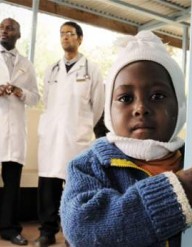

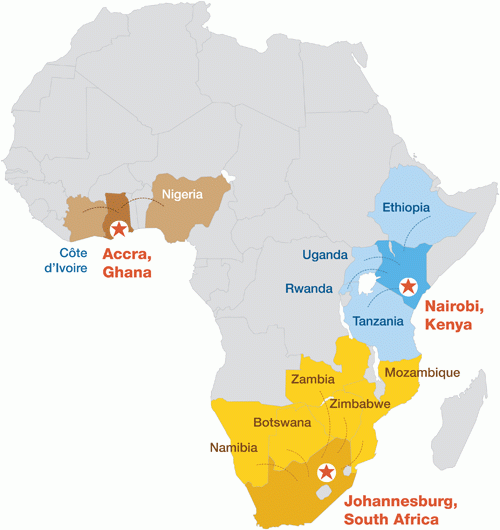
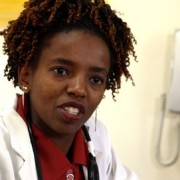

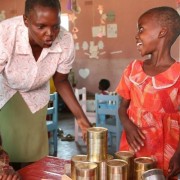
Comment
Make a general inquiry or suggest an improvement.